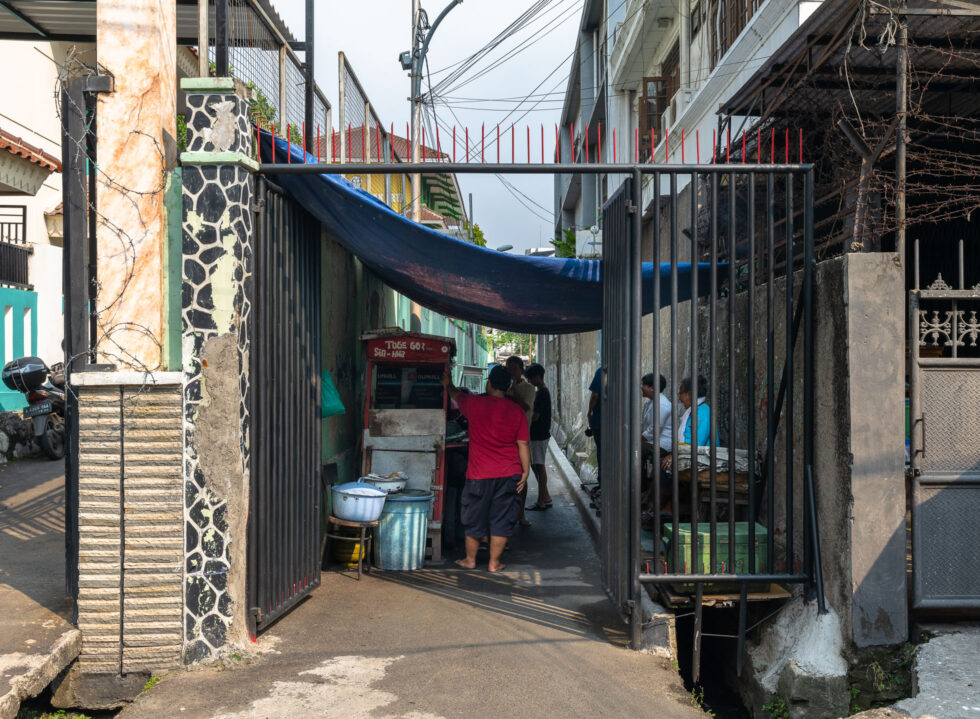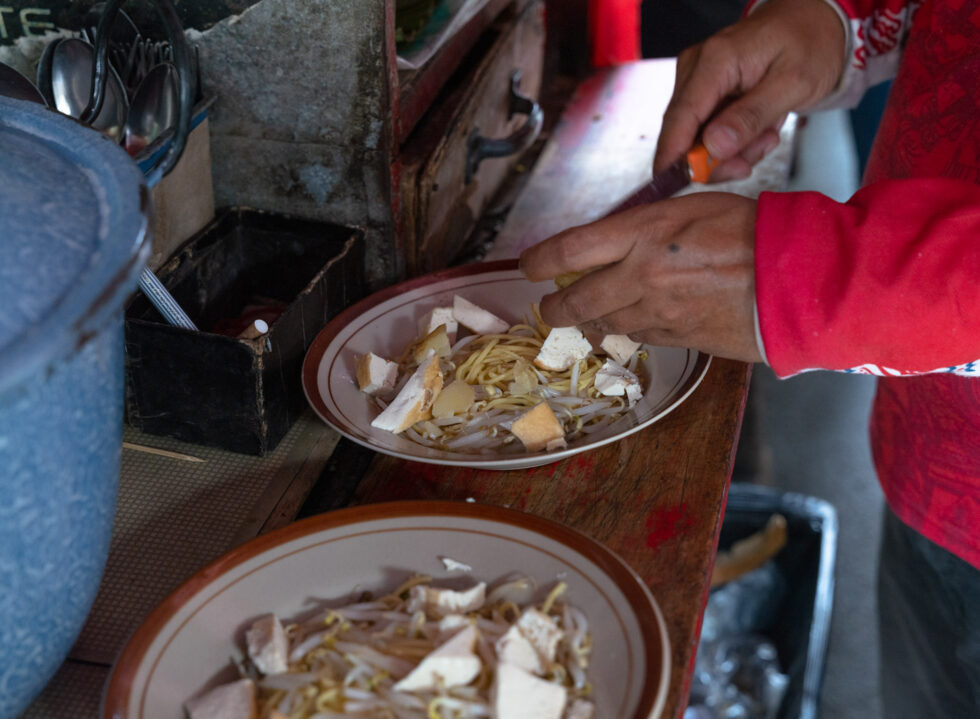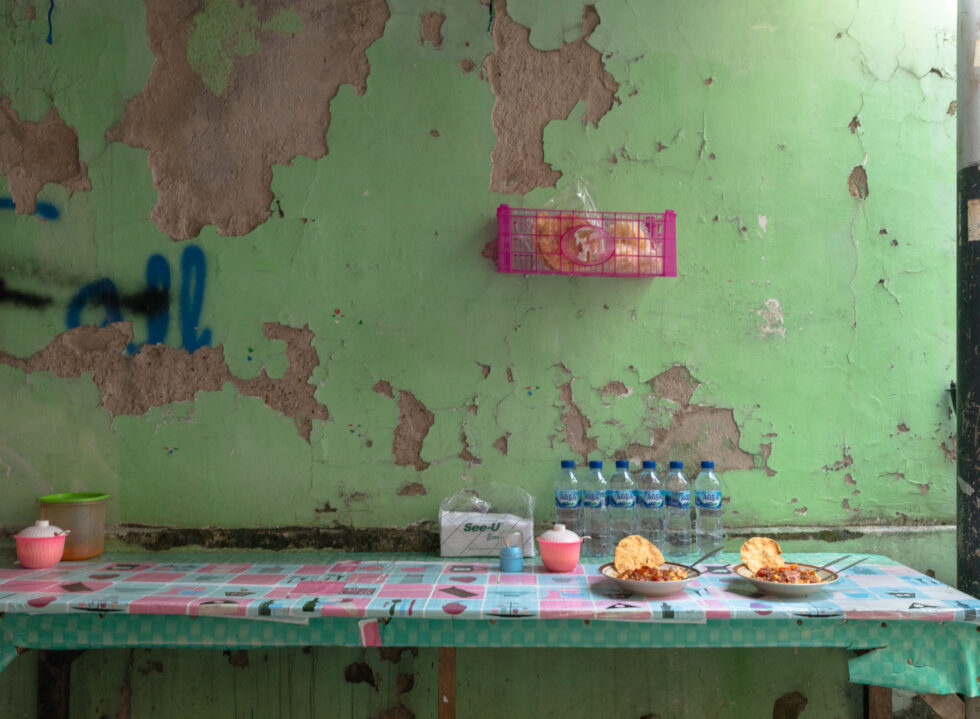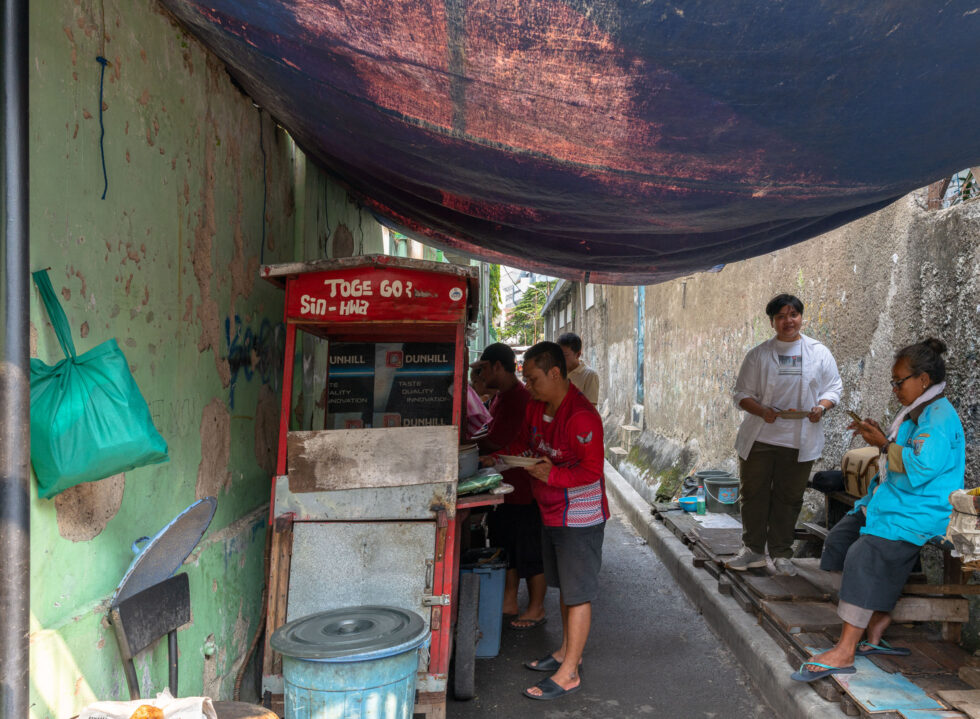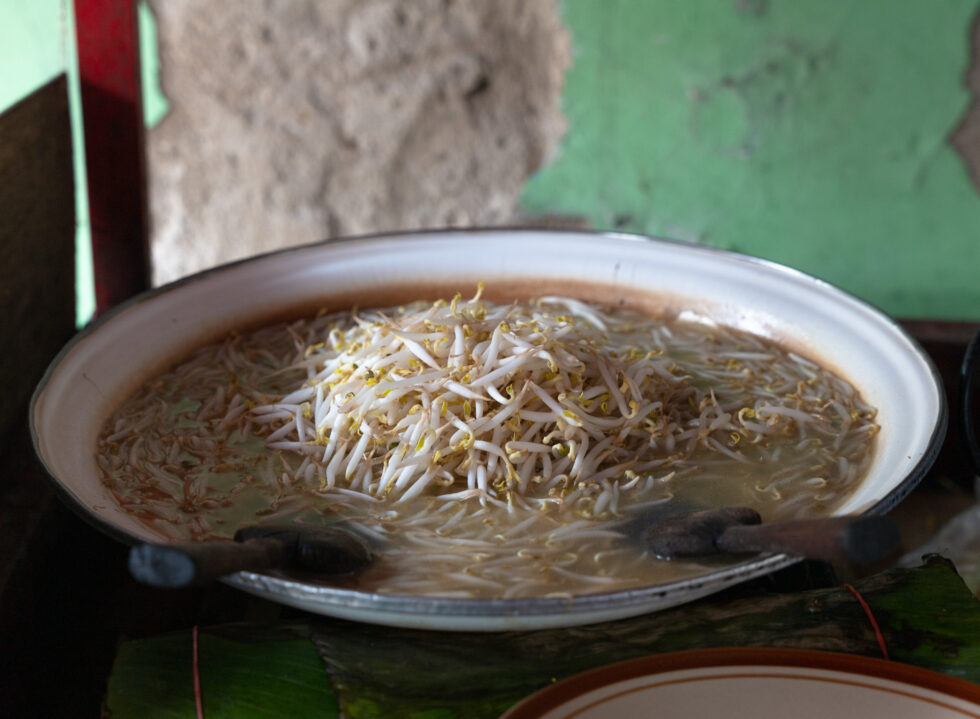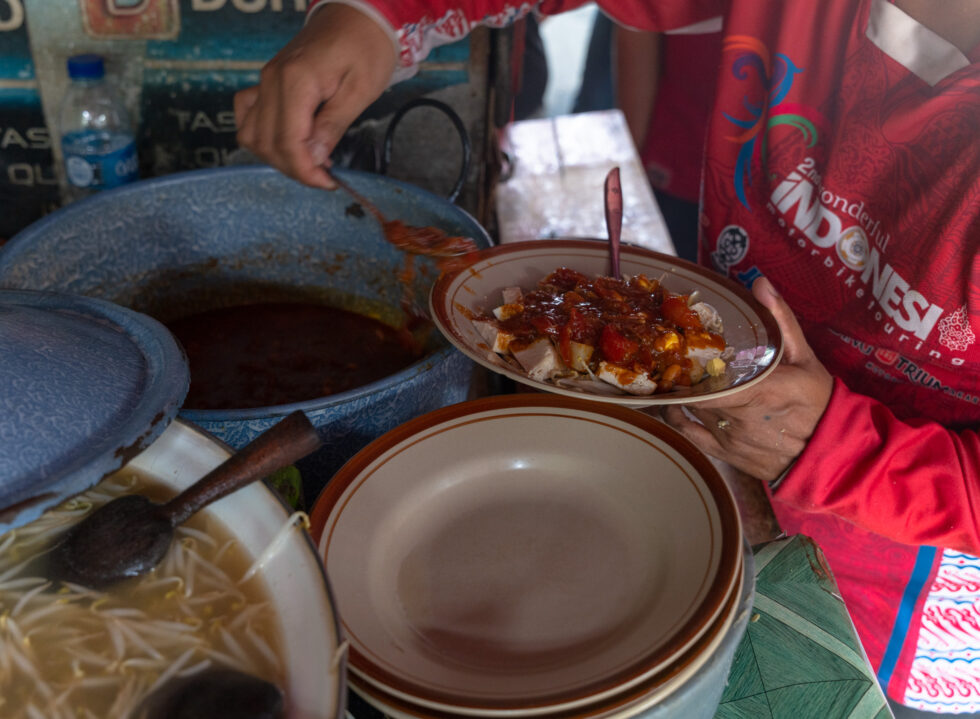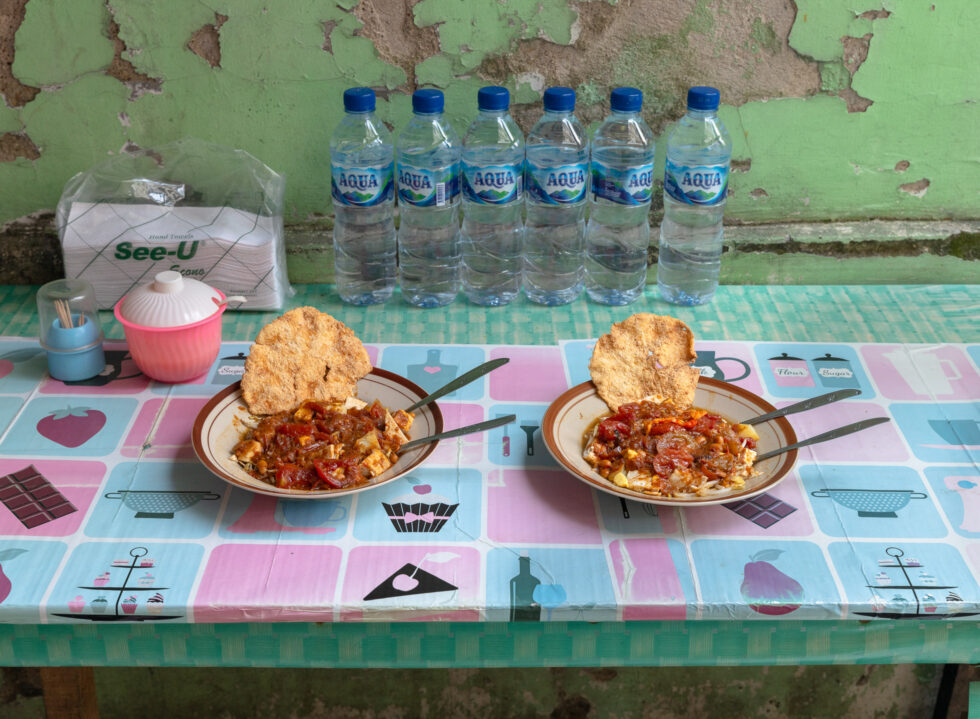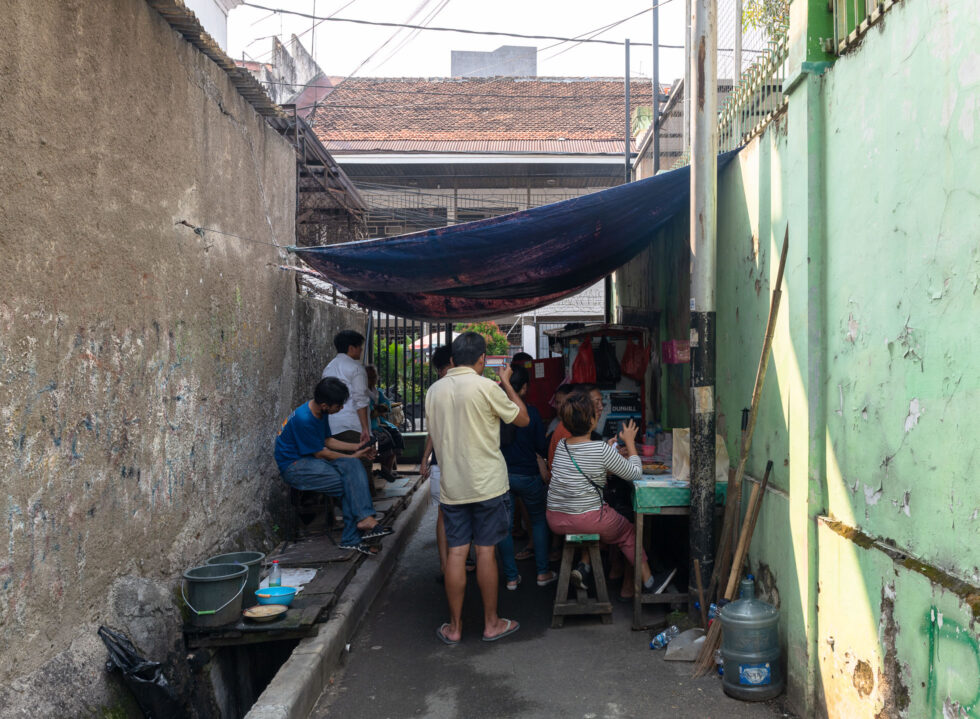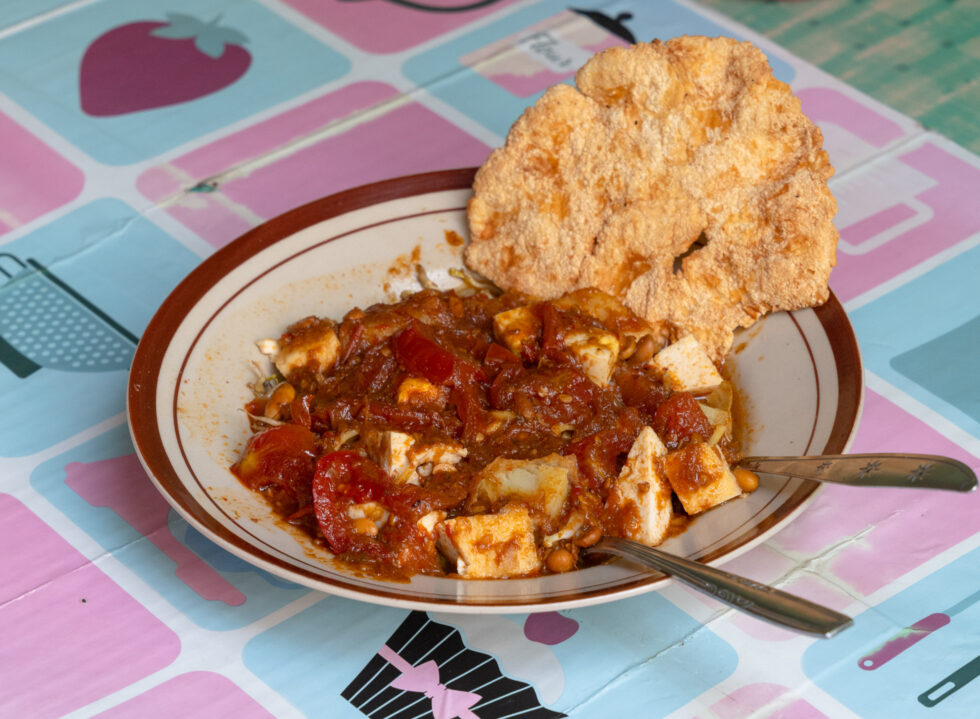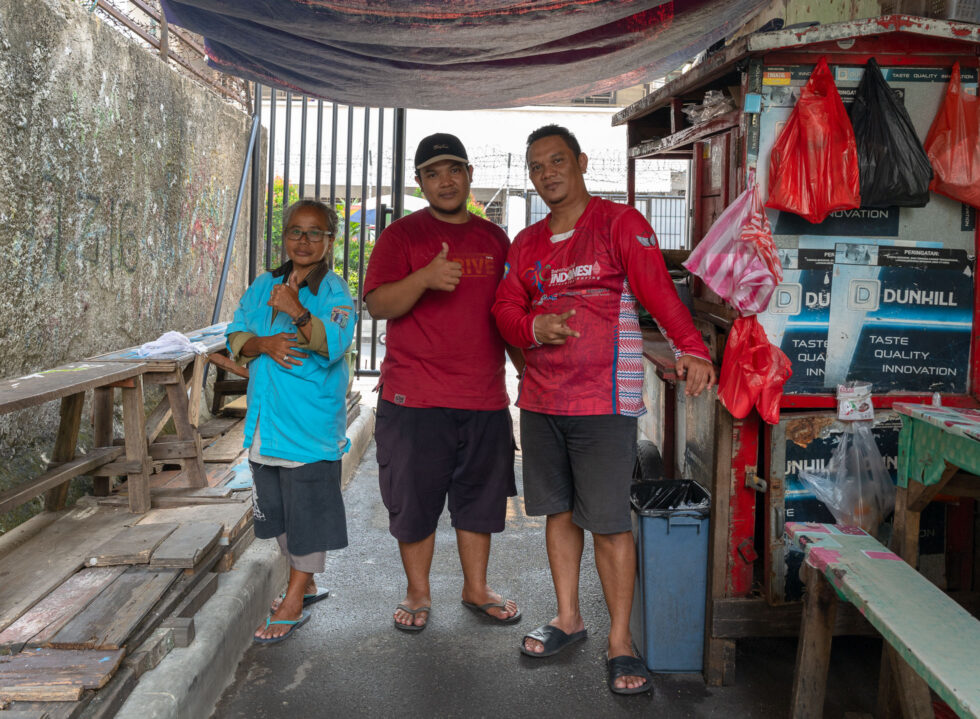The small street of Krekot III in Pasar Baru is unceasingly abuzz with activities. Surging from within the gates of public high school SMAN 20, amplified announcements compete with the raucous chatter of students, while street food vendors line the road outside filling the air with the sound of their cooking. Amidst this lively scene, the 80-year-old Toge Goreng Sin Hwa quietly sets up its humble stall.
Tucked inside an alley next to the high school, the unknowing passerby would have missed it altogether. Under a tarp roof, a red cart, a communal table and rickety seats over a board-covered gutter make up the entirety of the food stall; residents sometimes amble through to get to their house at the other end of the alley, and young children blaze past on their bicycles despite the disapproving glares of the customers. Yet this scene alone doesn’t provide a clue about the illustrious history attached to the longtime neighbourhood business.
“Engkong (grandpa) began selling toge goreng (mung bean sprouts dish) in the ’40s, before the country’s independence,” shared Emil Salim, the third-generation owner who now manages the stall with his cousins and nephews. “He set up shop next to Sekolah Xin Hua or Sin Hwa nearby, a school for Chinese communities in the area—hence the name. The school closed in 1965, but even today former students still return for Engkong‘s version of toge goreng.”
While tossing and shifting through the raw mung bean sprouts with his woven bamboo tray, he explained his grandpa Sanian’s iteration of toge goreng and how it diverts from the original recipe of the Bogor-hailed dish. Instead of oncom (fermented food closely related to tempeh), garlic chives, rice cakes and sweet soy sauce, Sanian’s combination would find fried potatoes, tofu and a bolognese-like tomato sauce mixed into the mung bean sprouts. Longtime regulars would then complete the dish with sweet melinjo crackers imported from Yogyakarta.
The result is a sweet, savoury and at once refreshing culmination of flavours. Seemingly simple in appearance, the dish possesses a magnetic pull that fills the unassuming stall with an interesting cast of characters.
A lady in her 90s regularly drives over on her own, recounting the time when Emil’s grandpa would give her a free plate of toge goreng when she ran out of pocket money. There are those making the journey straight from the airport upon landing, skipping family visits for a plate of the “Indonesian spaghetti”, as Emil often calls it. Even the younger generation and newcomers in the neighbourhood quickly turn into regulars and know to come early with the dish selling out way before the stall’s closing time at five in the afternoon.
Few flavours leave a lasting impression, but when they do linger, as Toge Goreng Sin Hwa has proven, the memory could last for decades after.
